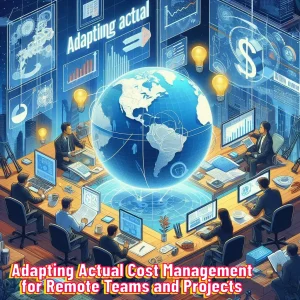To find out how Artificial Intelligence is changing the Project Management landscape, you may enjoy reading this article https://www.shaunstoltz.com/did-artificial-intelligence-just-change-everything-about-project-management/
I. Introduction
Hello fellow project managers and enthusiasts! As someone who’s been in the project management field for quite some time, I know that one of the most crucial aspects of any successful project is understanding and managing stakeholders. If you’re reading this, you probably agree that stakeholder management can make or break your project, but it can often feel like a complex web of relationships and priorities to navigate.
That’s where stakeholder theory comes in. This powerful approach, rooted in both business ethics and management principles, can help us better understand and address the needs of the various stakeholders involved in our projects. In this blog post, I’ll be breaking down the five core concepts of stakeholder theory and discussing their implications on project management. My goal is to provide you with valuable insights and tools to help you build stronger, more effective relationships with your stakeholders and ultimately achieve greater project success.
Ready to dive in? Let’s go!
II. Concept 1: Identifying Stakeholders
Before we can begin managing stakeholders, we first need to know who they are. In my experience, this step is often overlooked, and it can have serious consequences for a project. Let’s dive into what stakeholders are, the different types, and some methods for identifying them.
A. Definition and significance of stakeholders
Stakeholders are individuals or groups that have a direct or indirect interest in a project’s outcome. They can influence, or be affected by, the project’s decisions and actions. The significance of stakeholders in a project cannot be overstated, as their support or opposition can determine the project’s success or failure.
B. Types of stakeholders
There are two main types of stakeholders: internal and external.
- Internal stakeholders are those directly involved in the project, such as project team members, management, and company employees. They have a vested interest in the project’s success, as it can impact their careers or the company’s bottom line.
- External stakeholders, on the other hand, are not directly involved in the project but can still be affected by its outcome. Examples include customers, suppliers, investors, government bodies, and local communities.
C. Methods for identifying stakeholders
I’ve found that brainstorming sessions with your project team can be a helpful starting point for identifying stakeholders. Also, consider reviewing project documentation and conducting research to identify potential external stakeholders.
Here are some questions to consider when identifying stakeholders:
- Who will be directly involved in the project?
- Who will be affected by the project’s outcome, either positively or negatively?
- Who has influence over the project’s success or failure?
- Are there any regulatory bodies or industry groups that may have a stake in the project?
D. Case study: the importance of stakeholder identification in a project
I once worked on a construction project that was delayed because we overlooked a critical external stakeholder: the local environmental group. They were concerned about the project’s impact on a nearby wetland area, and their opposition led to lengthy discussions and modifications to the project plan. Had we identified and engaged with them earlier, we could have addressed their concerns proactively and avoided delays.
The takeaway? Identifying stakeholders is an essential first step in stakeholder management. It helps you understand the landscape of interests and relationships surrounding your project, allowing you to make better-informed decisions and minimize potential roadblocks.
III. Concept 2: Prioritizing Stakeholders
As project managers, we’re no strangers to the fact that resources are often limited, and time is of the essence. While it would be ideal to address the needs and concerns of every stakeholder, it’s often not feasible. That’s where prioritizing stakeholders comes in. Let’s explore why it’s essential and the factors to consider when doing so.
A. The need for stakeholder prioritization
Prioritizing stakeholders helps you focus your efforts on those who have the most significant impact on your project. By doing this, you can allocate your resources more effectively and avoid spreading yourself too thin, which can lead to project delays or even failure.
B. Factors to consider in prioritization
When prioritizing stakeholders, there are three main factors to consider:
- Influence: How much sway does the stakeholder have over the project’s outcome? Those with more influence should typically be given higher priority.
- Power: How much authority does the stakeholder have? Stakeholders with more power, such as decision-makers or those with significant control over resources, should be prioritized.
- Urgency: How immediate are the stakeholder’s needs or concerns? Stakeholders with more pressing issues may require higher prioritization to address their needs promptly.
C. Tools for stakeholder prioritization
One popular tool I’ve used to prioritize stakeholders is the Power-Interest Grid. This visual tool plots stakeholders based on their power and interest in the project, allowing you to easily identify which stakeholders require the most attention.
D. Case study: prioritizing stakeholders to avoid project pitfalls
In a software development project I managed, we faced a tight deadline and limited resources. By prioritizing stakeholders, we were able to focus on addressing the needs of our most influential and powerful stakeholders: the executive sponsor and the project’s key users. This helped us secure the necessary resources and support to meet our deadline while also delivering a product that met the users’ requirements. Had we not prioritized our stakeholders, we could have easily become overwhelmed and risked missing the deadline or delivering a subpar product.
In conclusion, prioritizing stakeholders is a critical step in stakeholder management. It helps you concentrate your efforts on the most impactful stakeholders, ensuring that your project stays on track and has the necessary support to succeed.
IV. Concept 3: Engaging Stakeholders
Now that you’ve identified and prioritized your stakeholders, it’s time to engage with them. Establishing and maintaining strong relationships with your stakeholders is crucial for project success, and I’ve found that effective communication is the key. Let’s discuss some communication strategies and other tips for successful stakeholder engagement.
A. Communication strategies for stakeholder engagement
- Open and honest communication: Transparency is vital when engaging with stakeholders. Share relevant information about project progress, challenges, and decisions, and don’t shy away from discussing potential issues. Being upfront can help build trust and foster collaboration.
- Tailored messaging: Different stakeholders have different priorities, interests, and communication preferences. Take the time to understand what matters most to each stakeholder and tailor your messaging accordingly. This personal touch can go a long way in building strong relationships.
- Regular updates: Consistent communication is key to keeping stakeholders informed and engaged. Schedule regular touchpoints, such as meetings or status updates, to ensure stakeholders are up-to-date on project developments.
B. Building trust and maintaining relationships with stakeholders
Trust is the foundation of any strong relationship, and it’s no different with stakeholders. Be reliable by following through on commitments and being responsive to their needs and concerns. Demonstrating that you value their input and are willing to collaborate can strengthen trust and foster long-term relationships.
C. Strategies for managing expectations
Managing stakeholder expectations is an essential aspect of engagement. Clearly define project goals, scope, and deliverables, and be transparent about potential risks and challenges. Regularly revisit expectations to ensure alignment and address any discrepancies that may arise throughout the project.
D. Case study: successful stakeholder engagement in a complex project
In a recent infrastructure project I managed, we faced numerous challenges, including tight deadlines, budget constraints, and regulatory requirements. By engaging our stakeholders through open communication, tailored messaging, and regular updates, we were able to build trust and maintain strong relationships. This ultimately led to a collaborative effort that helped us overcome hurdles and complete the project successfully.
In summary, engaging stakeholders is a vital component of effective stakeholder management. By fostering open communication, building trust, and managing expectations, you can create an environment where stakeholders feel valued and empowered, ultimately contributing to your project’s success.
V. Concept 4: Stakeholder Influence on Decision-making
As project managers, we sometimes get caught up in our own perspectives and ideas. However, involving stakeholders in the decision-making process can offer valuable insights and lead to better project outcomes. In this section, we’ll discuss the importance of stakeholder input and explore techniques for involving them in decision-making.
A. How stakeholder input can shape project outcomes
Stakeholders bring a wealth of knowledge, experience, and unique perspectives to the table. By involving them in decision-making, you can tap into these resources to identify potential risks, uncover new opportunities, and make more informed decisions. This collaborative approach can ultimately lead to a more successful project that satisfies stakeholder needs and expectations.
B. Techniques for involving stakeholders in decision-making
- Workshops and brainstorming sessions: Inviting stakeholders to participate in workshops or brainstorming sessions can help generate new ideas, identify potential challenges, and foster a sense of ownership in the project.
- Surveys and feedback: Soliciting feedback from stakeholders through surveys or informal conversations can provide valuable insights into their needs, concerns, and suggestions for improvement.
- Formal consultation processes: Establishing a structured consultation process, such as regular meetings or a dedicated feedback channel, can help ensure stakeholders have an opportunity to contribute to decision-making.
C. The benefits of collaborative decision-making
In my experience, involving stakeholders in decision-making has several benefits:
- Improved decision quality: Stakeholders’ insights can help identify potential risks, challenges, and opportunities that may have been overlooked.
- Enhanced buy-in and support: Stakeholders who are involved in decision-making are more likely to feel a sense of ownership and commitment to the project’s success.
- Strengthened relationships: Collaborative decision-making can help build trust and rapport between the project team and stakeholders.
D. Case study: the impact of stakeholder involvement on project success
On a large-scale IT project I managed, we faced significant resistance from a key user group who felt their needs were not being addressed. By involving them in decision-making, we were able to uncover their concerns and adapt our project plan accordingly. This not only led to a more successful implementation but also fostered stronger relationships with the user group and increased their buy-in and support.
Incorporating stakeholder input into decision-making is a powerful way to enhance your project’s success. By fostering a collaborative environment and tapping into the wealth of knowledge and experience stakeholders possess, you can make more informed decisions and build stronger relationships that benefit the project’s outcome.
VI. Concept 5: Monitoring and Evaluating Stakeholder Relationships
As the old saying goes, “change is the only constant.” In the world of project management, this couldn’t be more true. Stakeholder needs, interests, and priorities can shift over time, making it crucial to continuously monitor and evaluate your relationships with them. In this section, we’ll discuss the importance of ongoing stakeholder analysis and share some techniques for keeping a pulse on these ever-evolving relationships.
A. The importance of ongoing stakeholder analysis
Regularly assessing your stakeholder relationships can help you identify changes in their needs or priorities, allowing you to adapt your approach and maintain strong connections. Furthermore, it can help you uncover new stakeholders, address emerging concerns, and ensure that your project stays on track.
B. Techniques for monitoring stakeholder relationships
- Relationship mapping: Creating a visual representation of your stakeholder relationships can help you identify patterns, assess the strength of connections, and spot potential areas for improvement.
- Regular progress reports: Sharing regular progress reports with stakeholders not only keeps them informed but also provides an opportunity to gather feedback and gauge their level of satisfaction with the project.
- Feedback and evaluation loops: Establishing a process for collecting and addressing stakeholder feedback can help you identify areas where relationships may need strengthening or additional support.
C. Adapting project plans based on stakeholder feedback
As you monitor and evaluate stakeholder relationships, you may need to make adjustments to your project plan to address changing needs or concerns. This might involve revisiting project goals, adjusting timelines, or reallocating resources. Being flexible and adaptive is key to maintaining strong stakeholder relationships and ensuring project success.
D. Case study: adapting to changing stakeholder needs
In a marketing project I led, we faced a sudden shift in market trends, leading to a change in our key stakeholders’ priorities. By monitoring our stakeholder relationships closely, we were able to identify this change and quickly adapt our project plan to address the new priorities. This responsiveness not only helped maintain strong relationships with our stakeholders but also led to a more successful project outcome.
In conclusion, monitoring and evaluating stakeholder relationships is an essential component of effective stakeholder management. By keeping a finger on the pulse of these relationships and being willing to adapt your project plan as needed, you can ensure your project remains on track and continues to meet the needs of your most important stakeholders.
VII. Conclusion
As we wrap up our deep dive into the Big 5 of stakeholder theory, I hope you’ve gained valuable insights and tools to help you navigate the complex world of stakeholder management. By effectively identifying, prioritizing, and engaging your stakeholders, involving them in decision-making, and continuously monitoring and evaluating your relationships with them, you can set the stage for project success.
In my experience, the key to effective stakeholder management lies in open communication, collaboration, and adaptability. Building strong, trusting relationships with your stakeholders can make all the difference in ensuring your project stays on track and achieves its goals.
Remember, every project is unique, and there is no one-size-fits-all approach to stakeholder management. However, by keeping these core concepts in mind and applying the techniques we’ve discussed, you can develop your own tailored approach to managing stakeholders and achieving project success.
Find out more about Shaun Stoltz https://www.shaunstoltz.com/about/
This post was written by an AI and reviewed/edited by a human.



